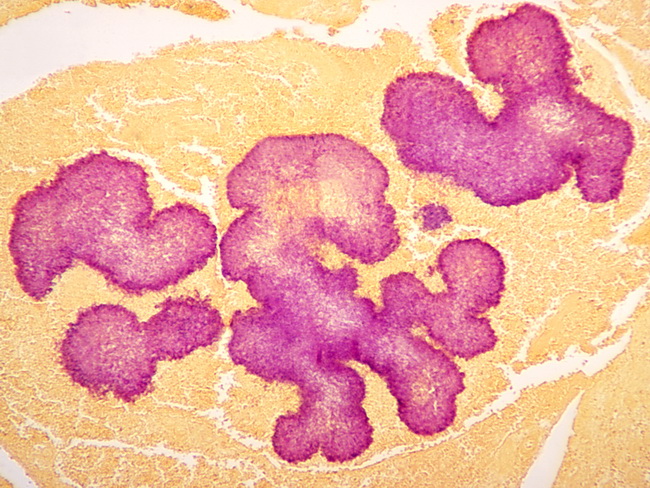Mycetoma : Madurella mycetomatis


Comments:
Mycetomas are chronic infections of the skin and subcutaneous tissues with multiple draining sinuses and characterized by the presence of granules (masses of infecting organisms) in the exudate. The causative agents in the vast majority of cases are bacteria and such lesions are known as actinomycetoma or actinomycotic mycetoma. Actinomycetomas are caused by filamentous bacteria such as Nocardia, Actinomyces, and Streptomyces species. Eumycetomas are caused by filamentous fungi and can be further subdivided into black-grain or white-grain mycetomas. Black-grain mycetomas are caused by dematiaceous (pigmented) fungi such as Madurella, Phialophora and Exophiala species. Hyaline (non-pigmented) molds such as Fusarium, Acremonium, and Scedosporium, and Pseudallescheria species cause white-grain mycetomas.This photomicrograph of a Gridley-stained tissue specimen from a black-grain mycetoma depicts granules of Madurella mycetomatis. Image courtesy of: Dr. Libero Ajello, CDC Public Health Library.



